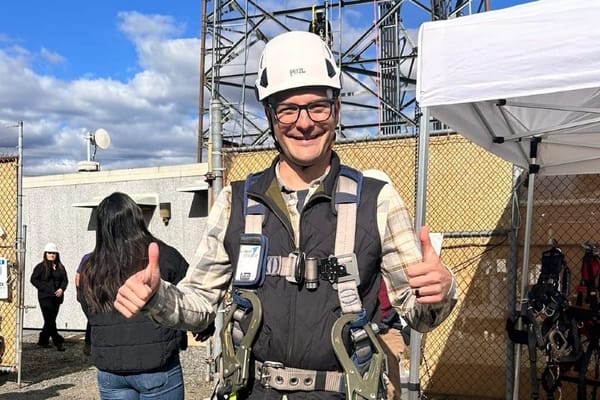Broadband Plan Commentary: Ball State University
Testing prototypes. Assisting another university with a campus-wide wireless network. Delving into telecommunications policies. Investigating broadband’s impact on the economy. All are examples of Ball State University’s pioneering work with wireless broadband Internet access.
Expert Opinion
Editor’s Note: This is one of a series of guest commentaries on the National Broadband Plan, and appears by special invitation of BroadbandBreakfast.com. Neither BroadbandCensus.com nor BroadbandBreakfast.com endorse the views in this commentary. We invite officials, experts and individuals interested in the state of broadband to offer commentaries of their own. To offer a commentary, please e-mail commentary@broadbandcensus.com. Not all commentaries may be published.
By Marc Ransford, Ball State University media relations manager
Testing prototypes. Assisting another university with a campus-wide wireless network. Delving into telecommunications policies. Investigating broadband’s impact on the economy. All are examples of Ball State University’s pioneering work with wireless broadband Internet access.
When the Federal Communications Commission asked how broadband could stimulate the nation’s economy, the Muncie, Ind., university shared its recommendations with Congress. Ball State was contacted in 2009 because of its leadership in the field of emerging media and its Digital Policy Institute’s broadband expertise. The FCC recently submitted to Congress its National Broadband Plan.
When officials at the University of Wisconsin needed a cost-effective way to test wireless broadband on city buses running throughout the Madison campus, they turned to Ball State.
As a result of a long-standing partnership with Internet networking firm Cisco Systems, Ball State is serving as a consultant on the project, recently deploying and remotely managing the wireless test bed for computer science students at its Big Ten neighbor.
“It’s an example of how Ball State’s expertise can impact other universities and colleges across the nation,” said Robert Yadon, a professor of information and communication sciences at Ball State, who has been leading an effort to transform the university into a role model for harnessing advanced wireless technology,
When such wireless broadband industry leaders as Telamon, Alvarion, Digital Bridge Communications and Cisco have wireless broadband prototypes to test, they send them to Ball State.
“We get calls from companies begging us to test their prototypes simply because of our relationship with many of the major broadband wireless vendors,” says Vernon Draper, assistant professor of computing and communications integration who has worked with Yadon on the wireless broadband testing project.
As a result of partnerships throughout the communications industry developed by Ball State’s Center for Information and Communications Sciences, the university is developing one of the country’s most sophisticated test beds for wireless broadband.
“What makes Ball State intriguing is that the university is an early adopter of new technology and then it embeds the knowledge gained in deployment into its curriculum,” said Randy Pond, Cisco’s executive vice president of operations, processes and systems. He also received his bachelor’s degrees in accounting and economics from Ball State.
“Ball State has always been on the leading edge of technology and as a result of our partnership with the university, we’ve established a national model for other technology companies to follow, he said. “It is the perfect alignment between a university and private industry.”
And in 2006, when Indiana wanted to revise its telecommunications regulations and bring broadband to underserved areas of the state, Ball State was in the forefront of providing research for new legislation.
Since 2006, DPI researchers have conducted similar studies in Michigan, Missouri and Ohio about telecommunications and video franchise reform. DPI also is continuing to study statewide video franchising and its effect upon broadband access and development nationwide, including the development of comprehensive databases on broadband deployment and its potential economic benefits.
Research into wireless broadband is a component of Ball State’s $17.7 million Emerging Media Initiative, which has won several international and national awards in the last several months.







